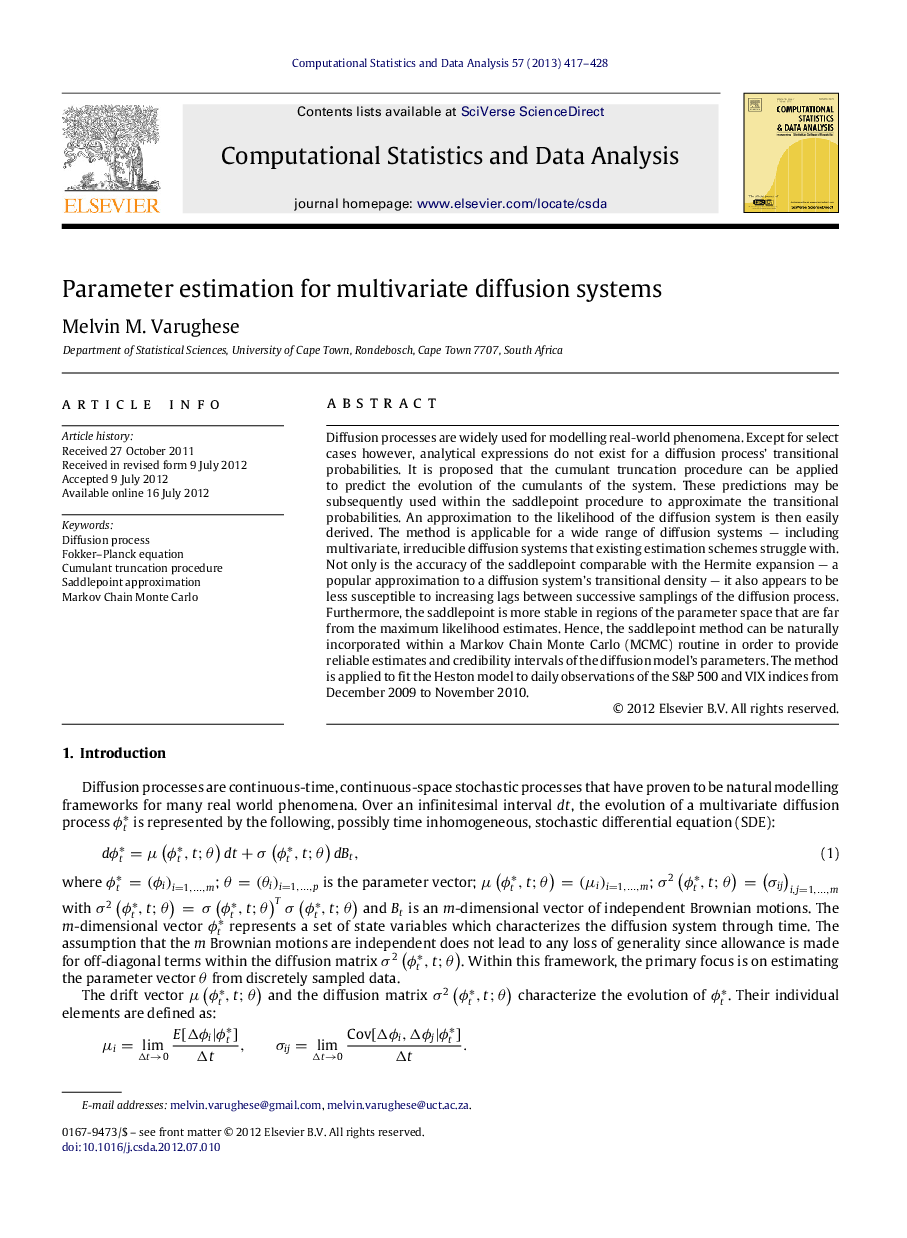| Article ID | Journal | Published Year | Pages | File Type |
|---|---|---|---|---|
| 10327533 | Computational Statistics & Data Analysis | 2013 | 12 Pages |
Abstract
Diffusion processes are widely used for modelling real-world phenomena. Except for select cases however, analytical expressions do not exist for a diffusion process' transitional probabilities. It is proposed that the cumulant truncation procedure can be applied to predict the evolution of the cumulants of the system. These predictions may be subsequently used within the saddlepoint procedure to approximate the transitional probabilities. An approximation to the likelihood of the diffusion system is then easily derived. The method is applicable for a wide range of diffusion systems - including multivariate, irreducible diffusion systems that existing estimation schemes struggle with. Not only is the accuracy of the saddlepoint comparable with the Hermite expansion - a popular approximation to a diffusion system's transitional density - it also appears to be less susceptible to increasing lags between successive samplings of the diffusion process. Furthermore, the saddlepoint is more stable in regions of the parameter space that are far from the maximum likelihood estimates. Hence, the saddlepoint method can be naturally incorporated within a Markov Chain Monte Carlo (MCMC) routine in order to provide reliable estimates and credibility intervals of the diffusion model's parameters. The method is applied to fit the Heston model to daily observations of the S&P 500 and VIX indices from December 2009 to November 2010.
Related Topics
Physical Sciences and Engineering
Computer Science
Computational Theory and Mathematics
Authors
Melvin M. Varughese,
